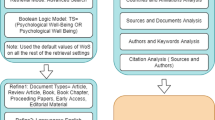Abstract
Using a MIMIC model with structural equations and two synthetic health scores, this study attempts to explore the impact of the measurement of health status on socioeconomic inequalities in health. The results showed satisfactory internal consistency for both summary measures that are the Physical Component Summary (PCS) and the Mental Component Summary (MCS). A Physical Component Summary and Mental Component Summary calculated from the Short Form health survey (SF-12) items showed the same magnitude of health state and degree of change overtime; Cronbach’s α for PCS-12 and MCS-12 was .93 and .86, respectively. Known subgroups comparison showed that the SF-12 discriminated well between men and women and those who differed in age and educational status. In addition, results suggest the existence of reporting heterogeneity biases for a given latent health state, women and old people are more likely to report physical activity limitations; Mental health problems are over-reported by women and divorced people and under-reported by the oldest people; Clerks, farmers and retired as well as employees and homemakers in the top of the social hierarchy more often report physical activity limitations. Finally, highly educated and socially advantaged people more often report social activities limitations due to the problems of physical and mental health.


Similar content being viewed by others
References
Bound, J. (1991). Self-reported versus objective measures of health in retirement models. The Journal of Human Resources, 26, 106–136.
Elstad, J. I. (1996). How large are the differences-really? Self-reported long standing illness working class and middle class men. Sociology of Health an Illness, 18(4), 475–498.
Grigoriadis, S., & Robinson, G. E. (2007). Gender issues in depression. Annals of Clinical Psychiatry, 19(4), 247–255.
Kerkhofs, M., & Lindeboom, M. (1995). Subjective health measures and state dependent reporting errors. Health Economics, 4, 221–235.
Mackenbach, J. P., Looman, C. W., & Van Der Meer, J. B. (1996). Differences in the misreporting of chronic conditions, by level of education: the effect on inequalities in prevalence rates. American Journal of Public Health, 86, 706–711.
Moessgaard, Iburg, K. M., Salomon, J. A., Tandon, A., & Murray, C. J. L. (2002). Cross-population comparability of physician-assessed and self-reported measures of health. In C. J. L. Murray, J. A. Salomon, C. Mathers, & A. D. Lopez (Eds.), Summary measures of population health: Concepts, ethics, measurement and applications (pp. 433–448). Geneva: WHO.
Murdaugh, C. (1997). Health-related quality of life as an outcome in organizational research. Medical Care, 35, 41–48.
Shmueli, A. (2002). Reporting heterogeneity in the measurement of health and health-related quality of life. PharmacoEconomics, 20(6), 405–412.
Shmueli, A. (2003). Socio-economic and demographic variation in health and in its measures: the issue of reporting heterogeneity. Social Science & Medicine, 57, 125–134.
Van Doorslaer, E., & Gerdtham, U. G. (2003). Does inequality in self-assessed health predict inequality in survival by income? Evidence from Swedish data. Social Science & Medicine, 57, 1621–1629.
Van Doorslaer, E., & Jones, A. (2003). Inequalities in self-reported health: validation of a new approach to measurement. In: Workshop on health economics and public policy. Journal of Health Economics, 22(1), 61–78.
Wang, J. L. (2004). The difference between single and married mothers in the 12-month prevalence of major depressive syndrome, associated factors and mental health service utilization. Social Psychiatry and Psychiatric Epidemiology, 39(1), 26–32.
Ware, J. E., & Sherbourne, C. D. (1992). The MOS 36-item short-form health survey (SF-36).I. Conceptual framework and item selection. Medical Care, 30, 473–483.
Ware, J. E., Kosinski, M., & Keller, S. D. (1995). SF-12: How to score the SF-12 physical and mental health summary scales. Boston. MA: The Health Institute. New England Medical Center.
Ware, J. E., Kosinski, M., & Keller, S. D. (1996). A 12-item short-form health survey: construction of scales and preliminary test of reliability and validity. Medical Care, 34, 220–226.
Ware, J. E., Kosinski, M., & Keller, S. D. (1998). SF-12: How to score the SF-12 physical and mental health summary scales (3rd ed.). Lincoln, RI: QualityMetric Inc.
World Health Organization. (1998). Health promotion glossary. Department of Mental Health and Substance Misuse. Geneva: WHO.
Acknowledgments
The authors would like to thank the reviewers for the useful comments made.
Author information
Authors and Affiliations
Corresponding author
Rights and permissions
About this article
Cite this article
Younsi, M., Chakroun, M. Inequality and Social Heterogeneity in Self-Reported Health Status in the Tunisian Population: An Analysis Using the MIMIC Model. Applied Research Quality Life 9, 79–97 (2014). https://doi.org/10.1007/s11482-013-9217-y
Received:
Accepted:
Published:
Issue Date:
DOI: https://doi.org/10.1007/s11482-013-9217-y




